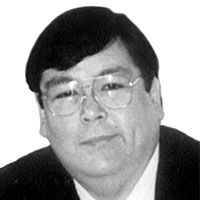GMA's narrowing political options

The political options of Madame Gloria Macapagal Arroyo (GMA) to remain in power beyond 2010 have been the cause of sleepless nights for many Filipinos. Over 60% of Filipinos have consistently registered in the SWS and Pulse Asia periodic surveys as seeking regime change.
Three political options have been considered as her likely means for staying in power beyond 2010. There is the Charter change (Cha cha) option where we shift to a Parliamentary form of government and she then reinvents herself as the new Prime Minister. The biggest impediment here is the fact that Cha cha is so patently self-serving and unpopular that forcing it could lead to a premature ouster of GMA.
There is the option to prop up a puppet president in 2010 where she pulls the strings as the puppeteer. This is assuming - a very big IF - that the puppet GMA installed will remain loyal when already in power. Even Defense Secretary Gilbert Teodoro admitted in the first ANC Forum for presidential wannabes that if there is just cause to prosecute, then GMA must account.
The third option, which gives my friend Conrad de Quiros the shivers up and down his spine, is the option to manufacture a national security crisis that will be used to impose martial law the same way Ferdinand Marcos did it in 1972.
The fear here is that the MILF and the CPP-NPA will be utilized to paint a deterioration of peace and order that will necessitate martial law (or called emergency rule and whatever) to address. A failure of elections in 2010 accompanied by violent repercussions can also be used as the national security pretext for term extension via emergency rule.
But can GMA realistically impose martial law like Marcos did it? To answer that question, we must review what exactly happened in 1972 that allowed Marcos to impose martial law.
GMA must reckon with these three realities that enabled Marcos to impose martial law in 1972:
1. The 1972 martial law was sponsored by the US. It was the period when the US was sponsoring many dictatorships all over Asia and South and Central America to prevent the spread of Communism, especially after the US military debacle in Vietnam.
2. There was no substantial resistance in the AFP (Armed Forces of the Philippines) to challenge the imposition of martial law. Today, there is an anti-GMA faction in the AFP.
3. In 1972, Filipinos did not know the use of People Power.
Shortly after martial law was declared, former Speaker Pepito Laurel asked the eminent Prof. Manoling Yap to accompany him to a meeting with Marcos.
In that Palace meeting, Laurel asked Marcos: “Brod, why did you have to declare martial law?” According to Manoling Yap, Marcos replied: “Brod, kung hindi ako nag-declare ng martial law, ako ang papatayin ng mga Amerikano (Brod, if I didn’t declare martial law, the Americans will kill me).”
According to Prof. Yap, the blueprint for martial law was drafted for Marcos by the US in South Korea and was personally hand carried here from South Korea by a Marcos cabinet member with close ties to the US.
During that period, the US feared the so-called Domino Theory — the spread of Communism. In Asia, Communism expanded from China to North Korea, Vietnam, Cambodia and Laos. In the Americas, it took its roots in Cuba when Fidel Castro ousted US-backed dictator Fulgencio Batista and then was poised to export the ideology to Central and South America.
Many of these US-sponsored dictatorships sprouted during the 1960s and 1970s which was the height of the Cold War. To rattle off some of these US-supported dictators, there were Papa Doc and Baby Doc Duvalier of Haiti, Pinochet of Chile, Somoza of Nicaragua, Videla of Argentina, Sadat and Mubarak of Egypt, Stroessner of Paraguay, the Shah of Iran, Banzer of Bolivia, Noriega of Panama, Trujillo of the Dominican Republic, Branco of Brazil, Armas of Guatemala, Batista of Cuba, Park of South Korea, Suharto of Indonesia and not the least of all — Marcos of the Philippines.
Reacting to the attempted People Power of February 24, 2006 allegedly led by General Danny Lim, GMA issued Proclamation 1017, a measure to impose emergency rule. The US immediately called GMA to task and asked her to recall the proclamation. GMA complied — one of the few instances when an act of impunity was restrained.
If a George W. Bush administration with a known imperial character slapped down a GMA ‘emergency rule’ proclamation, then GMA has only two chances — none and nil — that US President Barack Obama will allow her to get away with imposing martial law. Unlike Bush, Obama is committed to follow and promote the ideals of democracy.
During his recent visit, US Defense Secretary Robert Gates stated that the US expects the 2010 elections to push through. In 1972, the US-sponsored martial law cancelled the 1973 elections that would have ended the 2nd term of Marcos.
GMA can’t run to China for support in imposing martial law. China will not take the risk of a military confrontation with the US. The best that GMA can hope to get from China will be an accommodation for asylum if and when the heat becomes unbearable in the Philippines.
* * *
Chair Wrecker e-mail and website: [email protected] and www.chairwrecker.com
- Latest
- Trending




























